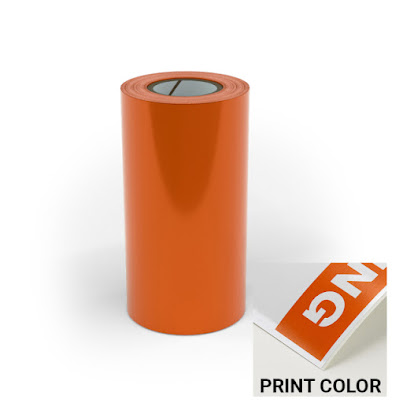The Essential Guide to Measurement Instruments: Types, Uses, and Innovations
Measurement instruments are the unsung heroes of science, engineering, and technology. They provide the critical data needed to ensure accuracy, efficiency, and quality across a multitude of fields. From everyday tasks to cutting-edge research, these instruments help us quantify, analyze, and understand the physical world around us. In this blog, we'll explore the different types of measurement instruments, their applications, and the latest innovations shaping their future.
What are Measurement Instruments?
Measurement instruments are tools used to quantify physical properties such as length, mass, temperature, pressure, and electrical quantities. They range from simple devices like rulers and thermometers to complex machinery like spectrometers and oscilloscopes. The primary goal of these instruments is to provide precise and reliable data that can be used for analysis, troubleshooting, and quality control.
Types of Measurement Instruments
Length Measurement Instruments: These instruments measure the distance between two points. Common examples include:
Calipers: Used to measure internal and external dimensions as well as depth with high accuracy. Digital calipers provide precise readings and are commonly used in mechanical engineering and machining.
Micrometers: Ideal for measuring small dimensions with great accuracy. They are essential in fields requiring precise measurements, such as manufacturing and materials science.
Laser Distance Meters: Utilize laser technology to measure long distances quickly and accurately. These are frequently used in construction and surveying.
Mass Measurement Instruments: These instruments measure the amount of matter in an object. Examples include:
Balances: Different types include analytical balances, which measure very small quantities with high precision, and platform balances, used for weighing larger objects.
Scales: More common in everyday applications, scales can measure mass and are used in various settings, from kitchens to laboratories.
Temperature Measurement Instruments: These instruments measure thermal energy or temperature. Key examples include:
Thermometers: Traditional liquid-in-glass thermometers and modern digital thermometers are used for various applications, including medical, industrial, and meteorological measurements.
Thermocouples: Sensors that measure temperature by generating a voltage proportional to the temperature difference. They are widely used in industrial processes and research.
Pressure Measurement Instruments: These instruments measure the force exerted by a fluid per unit area. Examples include:
Manometers: Simple devices used to measure pressure in gases or liquids. They can be analog or digital and are often used in laboratories and industrial settings.
Pressure Transducers: Convert pressure into an electrical signal for more detailed analysis. They are used in various industries, including aerospace and automotive.
Electrical Measurement Instruments: These instruments measure electrical properties such as voltage, current, and resistance. Examples include:
Multimeters: Versatile instruments that can measure voltage, current, and resistance. They are essential tools for electricians, engineers, and technicians.
Oscilloscopes: Display electrical signals as waveforms, allowing for the analysis of signal shape, frequency, and amplitude. They are crucial in electronics and communications.
Optical Measurement Instruments: These instruments use light to measure properties. Key examples include:
Spectrometers: Analyze the spectrum of light emitted or absorbed by a sample, providing information about its composition. They are used in chemistry, astronomy, and material science.
Interferometers: Measure small displacements, refractive index changes, and surface irregularities using the interference of light waves. They are used in precision engineering and optical testing.
Applications of Measurement Instruments
Measurement instruments are vital in numerous applications across various fields:
Manufacturing and Quality Control: Ensuring product specifications and quality through accurate measurements is essential in manufacturing. Instruments like micrometers and balances help maintain standards and detect defects.
Healthcare and Medicine: Accurate measurement is crucial for diagnostics and treatment. Instruments such as thermometers, blood pressure monitors, and analytical balances are used to monitor health and ensure the proper dosage of medications.
Research and Development: In scientific research and product development, measurement instruments provide the data needed to test hypotheses, validate experiments, and develop new technologies. Tools like spectrometers and oscilloscopes are indispensable for researchers.
Construction and Engineering: Measurement instruments ensure the accuracy of building structures, mechanical components, and infrastructure. Laser distance meters, pressure transducers, and calipers are commonly used in these fields.
Environmental Monitoring: Instruments that measure parameters such as temperature, pressure, and chemical concentrations are used to monitor environmental conditions and assess pollution levels.
Innovations and Future Trends
The field of measurement instruments is continually evolving, driven by technological advancements and the need for greater precision and efficiency. Key trends include:
Integration with Digital Technology: Modern measurement instruments are increasingly equipped with digital interfaces, allowing for real-time data analysis, remote monitoring, and enhanced accuracy.
Miniaturization: Smaller and more compact instruments, such as MEMS (Micro-Electro-Mechanical Systems) sensors, are becoming more prevalent, offering high precision in portable formats.
Automation and IoT: The integration of measurement instruments with automated systems and the Internet of Things (IoT) enables continuous monitoring and data collection, improving efficiency and reducing human error.
Enhanced Data Analysis: Advances in data analytics and artificial intelligence are providing more detailed insights from measurement data, enabling predictive maintenance and more informed decision-making.




Comments
Post a Comment